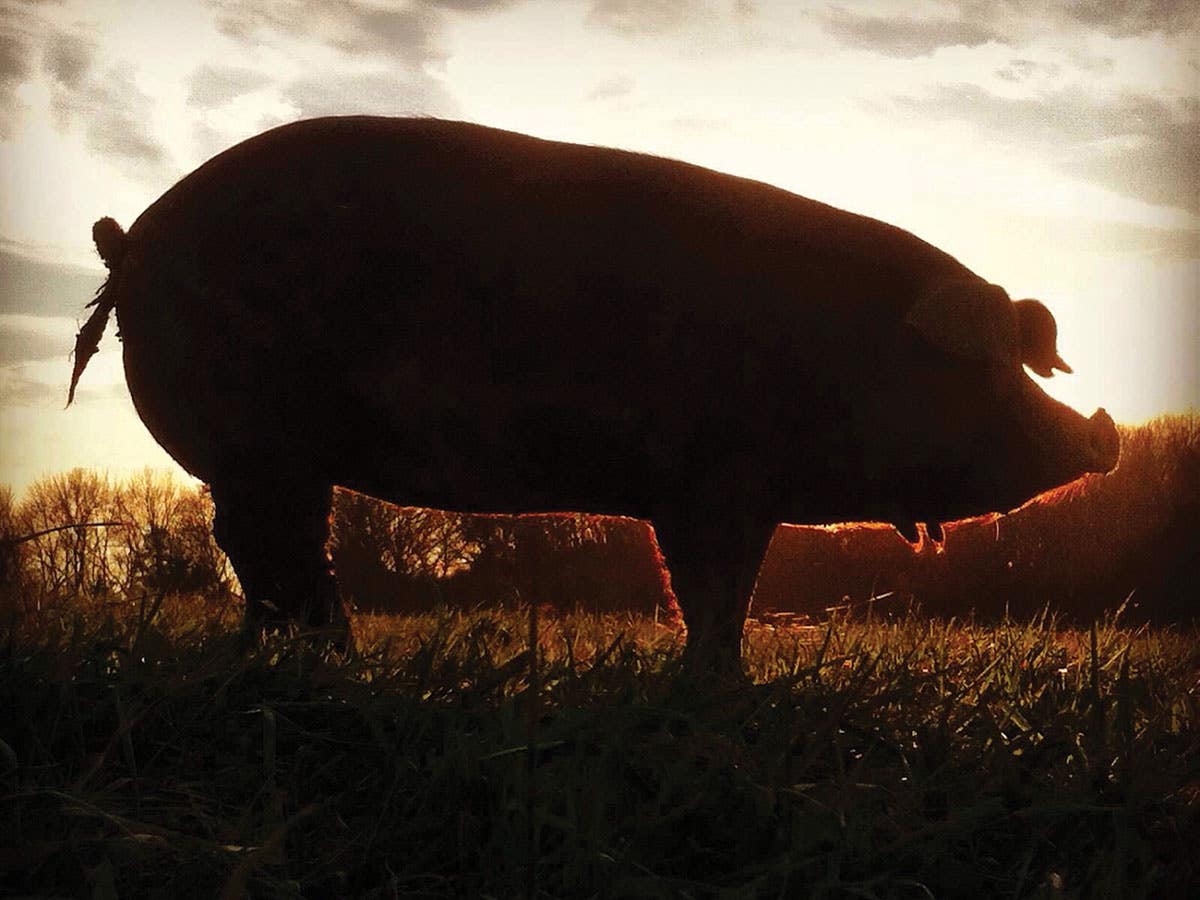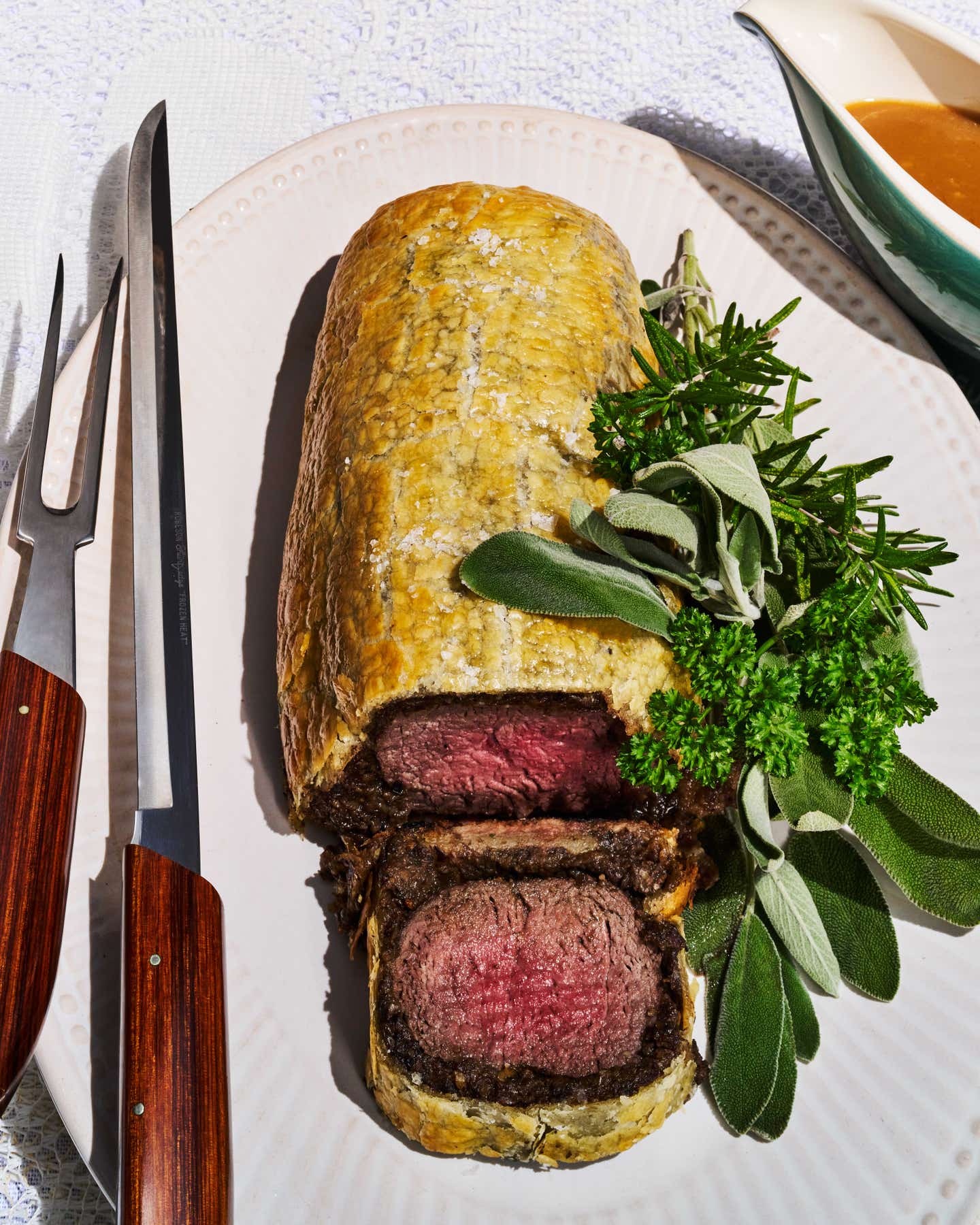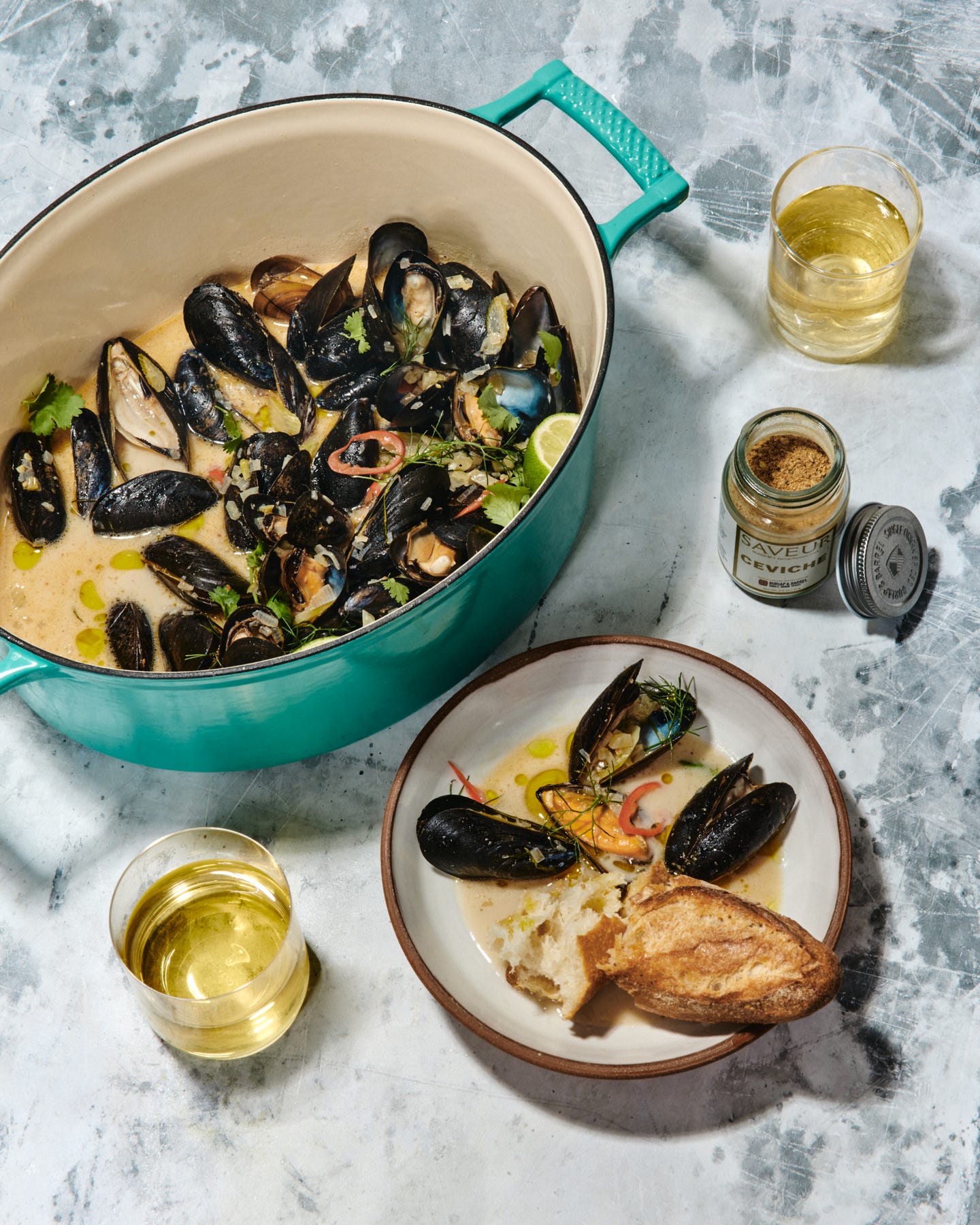
Is This America’s Tastiest Pig?
The case for the Red Wattle, a fat-cheeked hog with a heritage pedigree
In the late 1970s, H.C. Wengler, a Texas pig farmer, stumbled upon a clan of cinnamon-colored pigs ambling around the eastern part of the state. He herded them home, and bred them with his Duroc hogs, an American powerhouse breed known for its adaptability and quick growth. The result was the Red Wattle, so named for the distinct pair of furry protuberances that dangle from their jowls.
How the pigs got to Texas is a mystery. One story suggests they hitched a ride across the Atlantic with French colonists near the end of the 18th century; more recent findings indicate that the original stock might have arrived courtesy of Spanish farmers. The original breed was favored for its lean, flavorful meat, and long, productive lifespan—perfect for a hungry band of colonists.
While the modern hybrid still makes for efficient livestock, its culinary merits are what keep the breed alive. Brooklyn's Vinegar Hill House has served a Red Wattle pork chop since opening eight years ago, and the restaurant's chef Mike Poiarkoff says, "It's the porkiest pork you can get, the purest expression of how a pig should taste."
Their deliciousness is matched only by their scarcity: According to a 2014 report, only about 300 Red Wattle offspring are registered annually, placing the hogs on the Livestock Conservancy's threatened-species list along with the St. Croix, a tropical-climate sheep, and the Ancient White Park, a British cattle breed. Many farmers who breed them will work with the Red Wattle Hog Association to keep meticulous genealogical records of every pig. One particular family tree confirms that "Hilltop Angie" was born to "Rudy" and "Bestest Kind" on August 22, 1987. "Hilltop Angie" then hitched up with "Hilltop Ben" and produced "Hilltop Dana," "-Delia," and "-Dr.", all on July 21, 1990. "Hilltop Dr." went on to mate with "Twainland Betsy," and "Twainland Red Lady" was born on September 4, 1992. "4-9-131 Green Taco Bell" was born in Reeds, Missouri on my third birthday.
Ironically, preserving the species requires eating it. More demand equals more production, so boosting the market for these hogs could be their saving grace, and potentially ours too; qualities like disease resistance or adaptation to challenging environments could hold the keys to the future of agriculture. “Every time we lose a breed,” says the conservancy’s Jeannette Beranger, “we lose a small piece of genetic diversity that we can never get back.” So you can do your part, and have your pork chop too.
Keep Reading
Continue to Next Story










